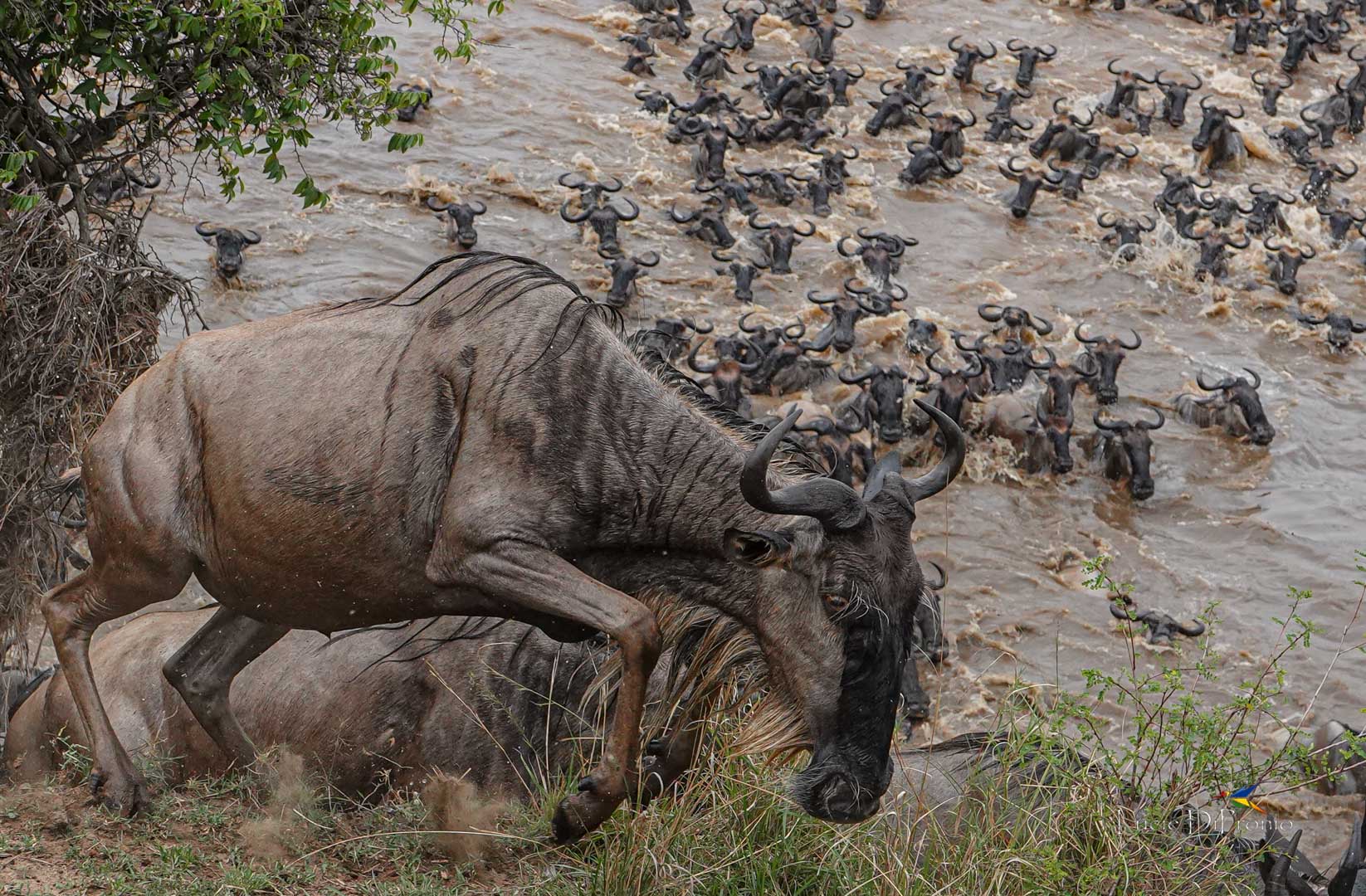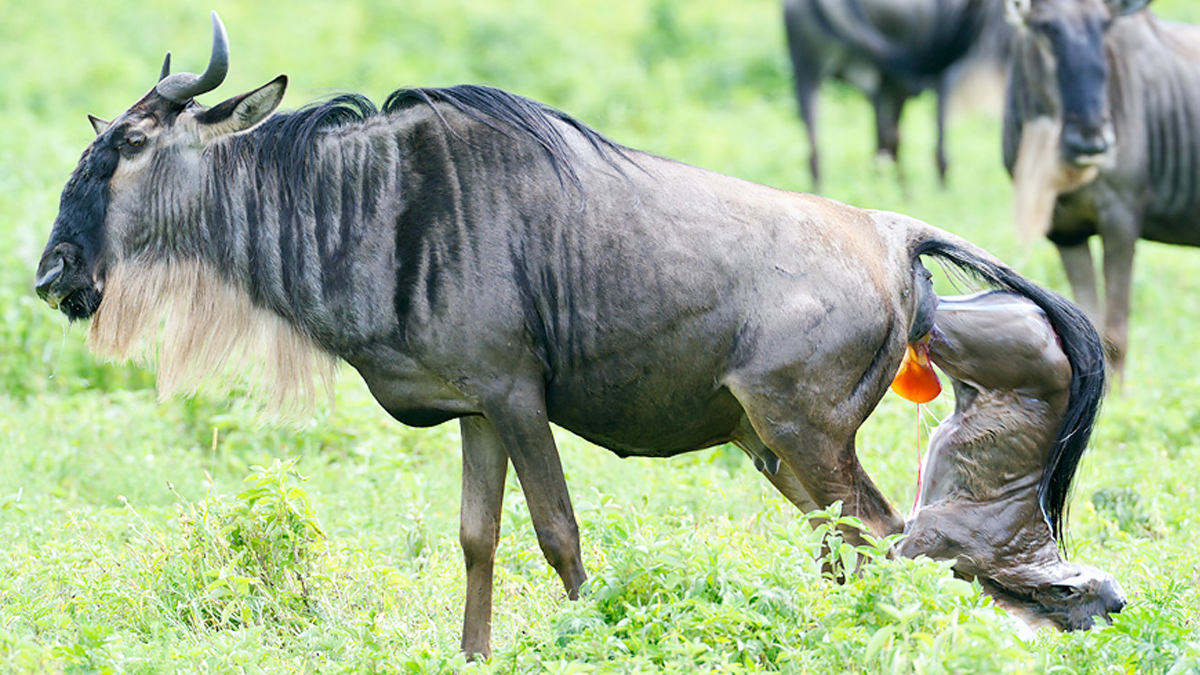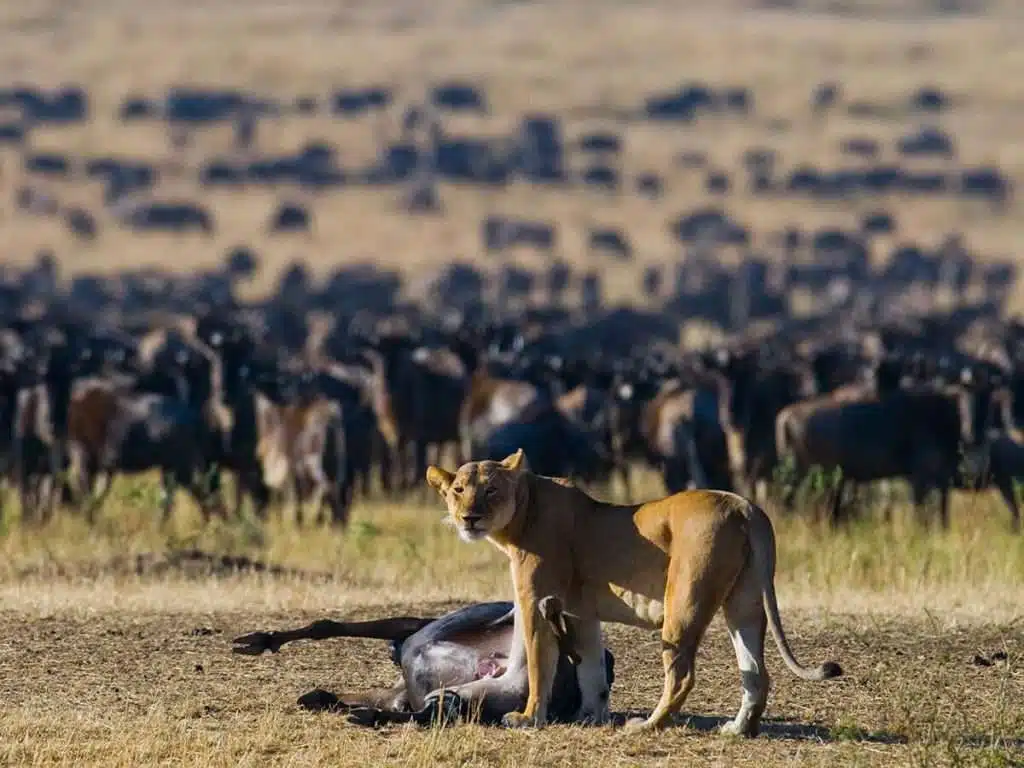Every year, East Africa hosts one of the most breathtaking natural spectacles on Earth—the Great Wildebeest Migration. Often called the “World Cup of Wildlife,” this awe-inspiring journey sees millions of wildebeest, accompanied by zebras and gazelles, move across the Serengeti and Masai Mara in search of greener pastures. It’s a cycle of life, survival, and instinct that attracts travelers, photographers, and nature enthusiasts from around the globe.
What Is the Great Wildebeest Migration?
The Great Wildebeest Migration is the annual movement of over 1.5 million wildebeest, joined by hundreds of thousands of zebras and Thomson’s gazelles. Driven by rainfall patterns and the search for fresh grazing lands, the migration follows a circular route between Tanzania’s Serengeti National Park and Kenya’s Masai Mara Reserve.
This is not just a seasonal movement—it’s a continuous cycle that represents the resilience and rhythm of nature.

Key Facts About the Great Wildebeest Migration
1. It’s a Year-Round Phenomenon
Many people think the migration happens only once a year, but in reality, it’s a continuous movement. From calving season in the southern Serengeti to river crossings in the Mara, there is always something happening.
2. Calving Season Brings New Life
Between January and March, the southern Serengeti becomes the stage for the birthing season. In just a few weeks, around half a million wildebeest calves are born, offering visitors the chance to witness both tender beginnings and dramatic predator action.

3. The River Crossings Are the Most Iconic Moment
From July to September, herds gather at the Mara and Grumeti rivers. These crossings are dramatic, dangerous, and unforgettable, with crocodiles lurking in the waters and predators waiting on the banks. It’s the most photographed event of the migration.
4. It’s Guided by Rainfall
The migration doesn’t follow a strict calendar—it follows the rains. Wildebeest instinctively track rainfall patterns, moving to where fresh grasses sprout. This makes the experience slightly unpredictable but always rewarding.
5. Predators Follow the Herds
The Great Wildebeest Migration is not just about wildebeest—it’s about survival. Lions, cheetahs, hyenas, and crocodiles all take advantage of the abundance of prey, making this one of the most action-packed wildlife spectacles on Earth.

Best Time to Witness the Migration
The best time to see the Great Wildebeest Migration depends on what you want to experience:
- January – March: Calving season in Southern Serengeti
- April – June: Herds move north, dramatic scenes across central Serengeti
- July – September: Mara River crossings in Northern Serengeti & Masai Mara
- October – December: Return journey south as herds follow the rains
Why It’s the “Eighth Wonder of the World”
The Great Wildebeest Migration has been called the eighth wonder of the natural world because of its sheer scale, unpredictability, and raw beauty. Witnessing millions of animals moving as one, across open savannahs and treacherous rivers, is an experience that stays with you forever.
Final Thoughts
The Great Wildebeest Migration is more than just a wildlife event—it’s a living, breathing reminder of nature’s power, beauty, and balance. Whether you’re a first-time safari-goer or a seasoned traveler, seeing this spectacle is one of the greatest experiences Tanzania and Kenya have to offer.

